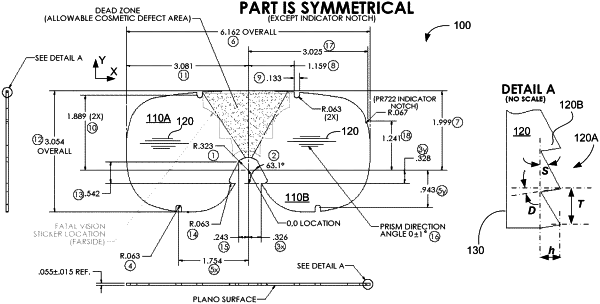| CPC G09B 23/28 (2013.01) | 14 Claims |

|
1. A system for simulating cognitive impairment of a user, the system comprising:
a pair of goggles containing:
a first optical filter element having first and second spatial dimensions and an optical filtering function with a spectral pass-band around a first wavelength representing a first color;
a second optical filter element having the first and second spatial dimensions and the optical filtering function;
wherein the pair of goggles has a first axis connecting centers of the first and second optical filter elements and a second axis that is substantially perpendicular to the first axis;
wherein at least one of said first and second optical filter elements includes a pattern in a body of said at least one of said first and second optical filter elements, the pattern (a) defining different phase delays for first and second collimated light beams that are incident on said at least one of said first and second optical filter elements substantially normally to a plane defined by the first and second axes and (b) extending substantially straight along a third axis in said plane, the third axis being inclined with respect to the first axis,
a first radiant object configured to reflect light at a second wavelength defining a second color, wherein the first and second optical filter elements are configured to substantially block light at the second wavelength;
a second radiant object configured to reflect light at a third wavelength within the spectral pass-band, the third wavelength defining a third color that is complementary to the second color;
and
a substrate bearing a graphic representation of a system of at least partially intersecting roads in a form of a substantially irregular pattern of multiple differently colored paths,
wherein at least a first portion of the graphic representation is configured to reflect light at a first set of wavelengths, wherein wavelengths from the first set of wavelengths define corresponding colors that are complementary to at least the second color; and
wherein at least a second portion of the graphic representation is configured to reflect light at a second set of wavelengths, wherein wavelengths from the second set of wavelengths define corresponding colors that are complementary to at least an auxiliary color, the auxiliary color being complementary to a color defined by a wavelength outside the spectral pass-band.
|